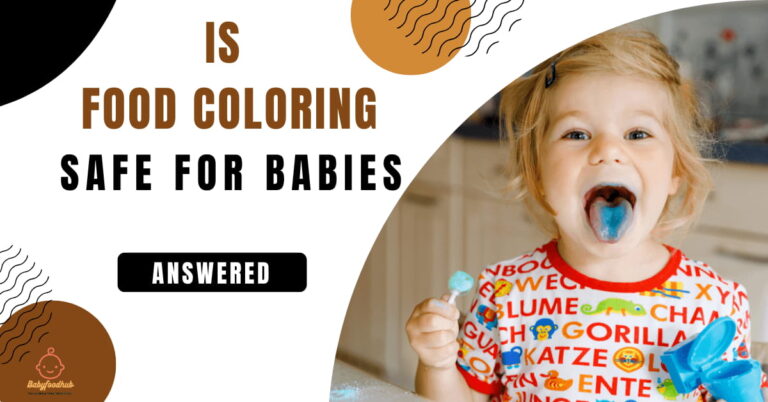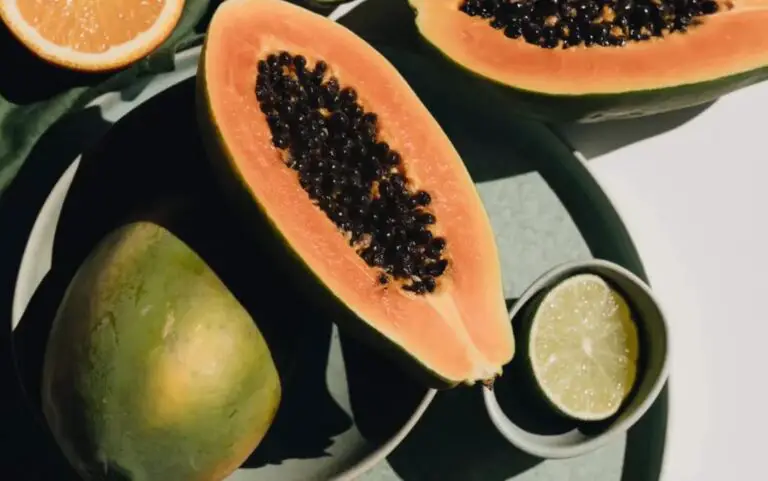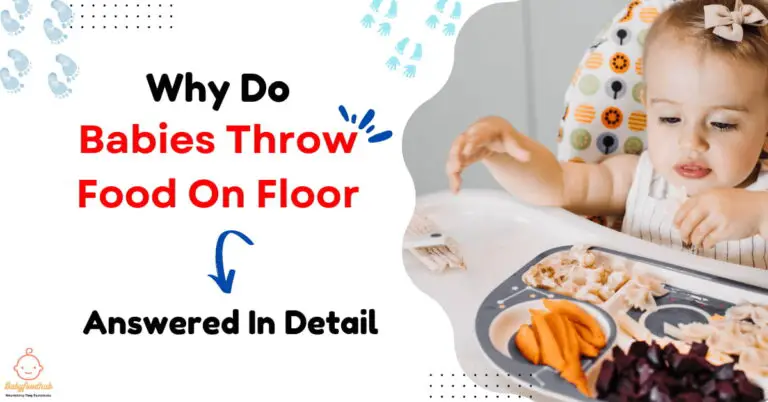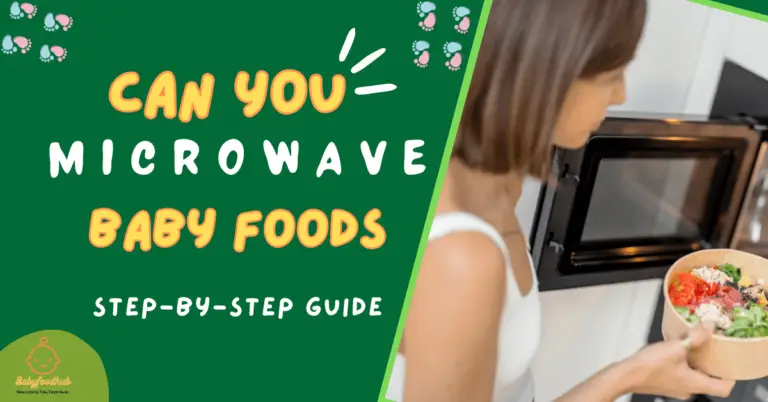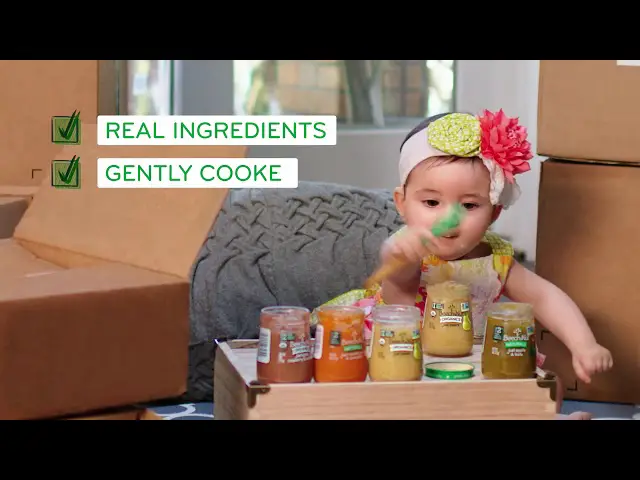Baby Food Pouches: Nourishing Your Little One On the Go!
Baby food pouches provide convenient feeding options for infants and toddlers on the go. These pouches usually contain pureed fruits, vegetables, grains, and sometimes meat.
As parents seek practical solutions for feeding their infants and toddlers, baby food pouches emerge as a top choice. Compact and travel-friendly, these pouches often contain a blend of pureed organic ingredients and are designed to cater to both taste and nutrition.
They align with busy lifestyles, offering a no-mess solution to meal times, whether at home or out and about. Baby food pouches are increasingly popular due to their ease of use—simply squeeze the contents onto a spoon or let the child feed themselves directly from the pouch. Brands like Serenity Kids, Kindthing, and Kekoa prioritize high-quality, organic ingredients, ensuring that convenience doesn’t come at the expense of health. Manufacturers offer a broad range of flavor combinations, appealing to developing palates and providing a spectrum of vital nutrients. However, experts advise moderation and variety in an infant’s diet to foster proper chewing skills and palate development.
Origins And Popularity Surge
From homemade purees to the dynamic shelves of supermarkets, baby food pouches have revolutionized the way parents feed their little ones. This seismic shift in the infant nutrition industry traces back to innovations in packaging and convenience-driven consumer trends. The transformational journey of baby food packaging is reflective of the ever-changing landscape of parental needs and technological advancements. Let’s delve into the historical development of baby food packaging and uncover the factors contributing to the rise in pouch usage that together propelled these products to the forefront of baby care essentials.
Historical Development Of Baby Food Packaging
The concept of pre-packaged baby food first emerged in the early 20th century, with glass jars leading the charge. Glass was the go-to material for its preservative-free containment and visual appeal, allowing parents to see the pureed contents. Over time, advancements in materials science and concerns for practicality gave rise to plastic containers and, most notably, the introduction of flexible packaging solutions.
- 1920s-1930s: Introduction of glass jars for commercial baby food.
- 1970s: Shift towards more cost-effective and lightweight plastic containers.
- The 2000s: Emergence of flexible packaging and the revolutionary baby food pouch with a resealable screw cap, marking the advent of a new era.
These developments took into account not just safety and preservation, but also portability and user-friendliness, paving the path for the popularity surge of baby food pouches in modern times.
Factors Contributing To The Rise In Pouch Usage
The surge in popularity of baby food pouches is not a chance occurrence; it’s the confluence of specific factors that align with the needs of contemporary families:
| Factor | Description |
| Convenience | Easy to transport, use on the go, and serve without the need for utensils. |
| User Experience | The mess-free design appeals to both parents and children. |
| Safety | Constructed from BPA-free materials and often with child-friendly caps. |
| Preservation | Enhanced shelf life with minimal preservatives due to innovative packaging technologies. |
| Environmental Impact | Compact and lightweight, resulting in reduced transport emissions compared to glass jars. |
Furthermore, the wide variety of blended flavors and nutrient-dense options have enticed health-conscious parents. Brands have leveraged these factors to meet parental demand for convenient, safe, and nutritious feeding options, leading to the widespread adoption of baby food pouches.
Balancing Convenience And Health
Parents always want the best for their little ones, especially when it comes to nutrition. Baby food pouches have become a staple in the pantries of busy caregivers, offering a quick and mess-free solution to feeding hungry babies on the go. But, as convenient as these pouches may be, it raises an important question: Are we compromising our babies’ health for the sake of convenience? In this section, we explore the complexities of choosing high-quality, nutritious baby food pouches that meet the golden standard of being both convenient and healthy.
Assessing The Nutritional Content Of Pre-packaged Options
When browsing the aisles for baby food pouches, the nutritional content should be a top priority. Here’s a quick guide to assessing what’s inside those convenient, squeezable packages:
- Check the ingredients list for whole foods and avoid pouches with added sugars or preservatives.
- Review the nutrition label for adequate levels of essential nutrients such as iron, vitamin C, and calcium.
- Be wary of the fiber content. Pouches often have less fiber than whole fruits and veggies, which is crucial for a child’s digestive health.
Pro Tip: Look for organic and non-GMO labels to ensure your baby is getting clean and safe ingredients.
Comparing Homemade Versus Commercial Baby Food Pouches
Do it yourself or buy off the shelf? That’s the question many parents face. Here’s a side-by-side comparison:
| Aspect | Homemade | Commercial |
| Ingredients Control | Complete control over freshness and quality | Dependent on brand and product line |
| Nutritional Value | Potentially higher due to fresh preparation | Varies, but can be high if chosen carefully |
| Convenience | Requires time for preparation and packaging | Ready to serve, perfect for on-the-go needs |
| Cost | Generally more cost-effective in the long run | May be pricier, especially for premium options |
| Storage & Shelf-life | Limited shelf-life; needs refrigeration | Longer shelf-life; often shelf-stable before opening |
Ultimately, a combination of both homemade and commercial options might provide the perfect balance for many families, giving the health benefits of homemade food with the convenience of store-bought pouches.
Ensuring Safe Baby Feeding
As a parent, nothing is more important than the health and safety of your baby, especially when it comes to feeding them. With the rise of convenience and nutrition rolled into baby food pouches, it’s essential to address safety concerns that might arise from their use. This section will guide you through navigating potential packaging issues, understanding regulations and certifications, and how you can ensure safe feeding experiences for your little one.
Navigating Concerns Over Packaging Materials And Product Recalls
Concerns about the safety of packaging materials have been a hot topic among parents and health experts alike. Baby food pouches, although convenient, come with their own set of safety considerations. Here are key factors to consider:
- Material Safety: Ensure the pouches are free from BPA, phthalates, and other harmful chemicals.
- Structural Integrity: Check that pouches don’t have any tears or damage that could lead to contamination.
- Product Recalls: Stay up-to-date with the latest news on recalls to ensure the products you’re using haven’t been flagged for safety issues.
To stay informed, parents should regularly visit governmental food safety websites or subscribe to notifications from reliable sources that track product recalls and safety alerts.
Regulations And Certifications For Baby Food Pouches
Regulations and certifications play a critical role in ensuring the safety of baby food pouches. Specifically:
- Government Regulations: Check that the products comply with the FDA and other relevant bodies that regulate food safety standards.
- Certifications: Look for organic or non-GMO certifications, which can indicate higher quality ingredients and safer processing methods.
- Label Transparency: Transparent labeling helps you understand where the ingredients come from, and how the product is made.
Understanding these elements can help create a safer feeding experience for your baby, translating to better peace of mind for you.
On-the-go Feeding Solutions
Parents and caregivers are all too familiar with the balancing act of managing a busy schedule while ensuring their little one’s nutrition doesn’t take a backseat. Baby food pouches have become the hero of on-the-go nourishment, providing a convenient and quick meal solution without compromising on health and quality. Let’s embark on the journey to discover how these ingenious products simplify life outside the nursery.
How Baby Food Pouches Simplify Traveling And Outdoor Activities
Traveling with toddlers just got easier. Baby food pouches offer a lightweight, compact, and spill-proof alternative to traditional feeding methods. No need to worry about fragile jars or the hassle of refrigeration. Here’s how they can make your next adventure a breeze:
- Portability: With their slender design, pouches fit conveniently into any diaper bag, purse, or backpack.
- Storage: The room-saving construction allows parents to pack multiple flavors and options without overload.
- Variety: Cater to fussy eaters with a range of wholesome purees, from sweet fruits to nutritious veggies.
- No Prep Time: Meals are prepacked and ready to serve; this means more time enjoying the great outdoors.
Tips For Clean And Mess-free Feeding With Pouches
Maintaining cleanliness during feedings can seem like a feat, but with the right approach, baby food pouches can significantly reduce the mess. Here are several tips to keep both baby and surroundings neat:
| Tip | Benefit |
| Squeeze onto a spoon | Controls flow and portion, less risk of over-squeezing. |
| Teach self-feeding | Empower toddlers to manage pouches, and encourage dexterity. |
| Reusable pouches | Easy to clean, eco-friendly, and cost-effective over time. |
| Use a bib with a pouch holder | Catches drips and spills, keeps clothes stain-free. |
With an array of nutritious options and practical packaging, baby food pouches stand as a revolutionary solution to feeding on the fly. Clever usage and a few simple tips can ensure that your baby remains fed, happy, and ready to explore alongside you, no matter where the day takes you.
Age-appropriate Selection
As parents navigate the vast landscape of baby food options, selecting the right food pouches for their little ones is crucial. Baby food pouches offer convenience and a variety of flavors to encourage a well-rounded diet, but it’s essential to choose age-appropriate textures and nutrients to support a child’s growth and development. Here’s a guide to help you decipher the age recommendations texture stages, and criteria for the optimal baby food pouches for your infant or toddler.
Understanding Age Recommendations And Texture Stages
When introducing solid foods to your baby, understanding the texture progression recommended for different age groups is key. Food pouches often come labeled with stages that correspond to your child’s age and developmental readiness for new textures:
- Stage 1: Smooth purees suitable for babies aged 4-6 months.
- Stage 2: Thicker consistency with soft chunks for babies 7-9 months.
- Stage 3: Chunkier textures appropriate for babies 10 months and older.
- Stage 4/Toddler: Heartier blends that include more complex ingredients for toddlers 12 months and up.
The right texture aids in the development of your baby’s chewing skills and can help prevent feeding difficulties as they grow. Always consult your pediatrician before transitioning to a new stage of food textures.
Criteria For Choosing The Best Baby Food Pouches
Selecting the finest baby food pouches goes beyond just picking flavors your baby might enjoy. Here are some criteria to guide your choice:
| Criteria | Description |
| Nutritional Value | Look for pouches with high nutritional content, such as those rich in vitamins, minerals, and healthy fats, without added sugars or preservatives. |
| Ingredient Quality | Opt for organic, non-GMO ingredients when possible to ensure your baby is not consuming harmful pesticides or chemicals. |
| Variety | Incorporating a variety of fruits, vegetables, grains, and proteins can help expose your child to different flavors and textures, promoting better eating habits. |
| Package Safety | Ensure the pouches are free from BPA, phthalates, and other potential contaminants that could leach into the food. |
| Convenience vs. Usage | While pouches are convenient for on-the-go feeding, encourage spoon-feeding at home to help your child develop motor skills. |
With these criteria in mind, examine labels carefully to ensure the pouches you pick offer the best in terms of both safety and nutrition. Ultimately, the right selection will cater to your little one’s developmental needs while tantalizing their taste buds!
Efficient Kitchen Management
An efficient kitchen saves time, reduces waste, and ensures that you and your family enjoy nutritious meals without hassle. When it comes to feeding infants and toddlers, baby food pouches are a go-to for many parents due to their convenience and portability. However, without proper organization and storage, you can quickly find yourself buried in a pile of pouches, unsure of their freshness or expiration dates. Let us navigate through the best practices for an organized kitchen where baby food pouches are arranged smartly and safely, guaranteeing ease and peace of mind during meal preps.
Best Practices For Storing And Organizing Pouches At Home
To ensure your kitchen stays clutter-free and your baby food pouches remain easily accessible, consider these tips:
- Designate a specific area in your pantry or kitchen cabinets exclusively for baby food pouches. This helps in quickly locating and retrieving them.
- Use clear storage containers or baskets to group pouches together. This way, you can see at a glance what flavors and types you have on hand.
- Organize by date and type. Place pouches with the nearest expiration dates in front and group similar types together to streamline meal decision-making.
- Employ a ‘first in, first out’ system – similar to what grocery stores do. Always use the oldest products first to minimize waste.
- Consider a hanging organizer over the back of a pantry door or a mounted rack inside cabinet doors to save space and keep pouches in sight.
Frequently Asked Questions About Baby Food Pouches
Are Food Pouches Good For Babies?
Food pouches can be convenient for feeding babies on the go but may hinder oral and sensory development if used excessively.
Why Are Baby Food Pouches Only Good For 24 Hours?
Baby food pouches are good for only 24 hours after opening due to bacteria growth risk from saliva contact.
Can A 9-Month-Old Eat Stage 4 Food?
Yes, a 9-month-old can generally eat Stage 4 foods if they show signs of readiness for more complex textures. Always consult your pediatrician first.
Is There Stage 3 Baby Food?
Yes, Stage 3 baby food exists, typically for babies aged 9-12 months, with chunkier textures for advanced eaters.
Are Baby Food Pouches Nutritious?
Baby food pouches can offer nutritious options for infants, with many containing a blend of fruits, vegetables, and proteins. Always read the label to ensure balanced nutrition.
Conclusion
Wrapping up, baby food pouches offer convenience, variety, and nutrition on the go. They’re a great option for busy families, but remember to balance convenience with mindful feeding practices. Always keep an eye on expiration dates and proper storage to ensure your baby’s meals are safe and healthy.
Embrace the ease pouches bring to your life without forgetting the joy of seeing your little one explore the wide world of flavors and textures. Choose wisely, feed lovingly, and raise happy, healthy eaters.


